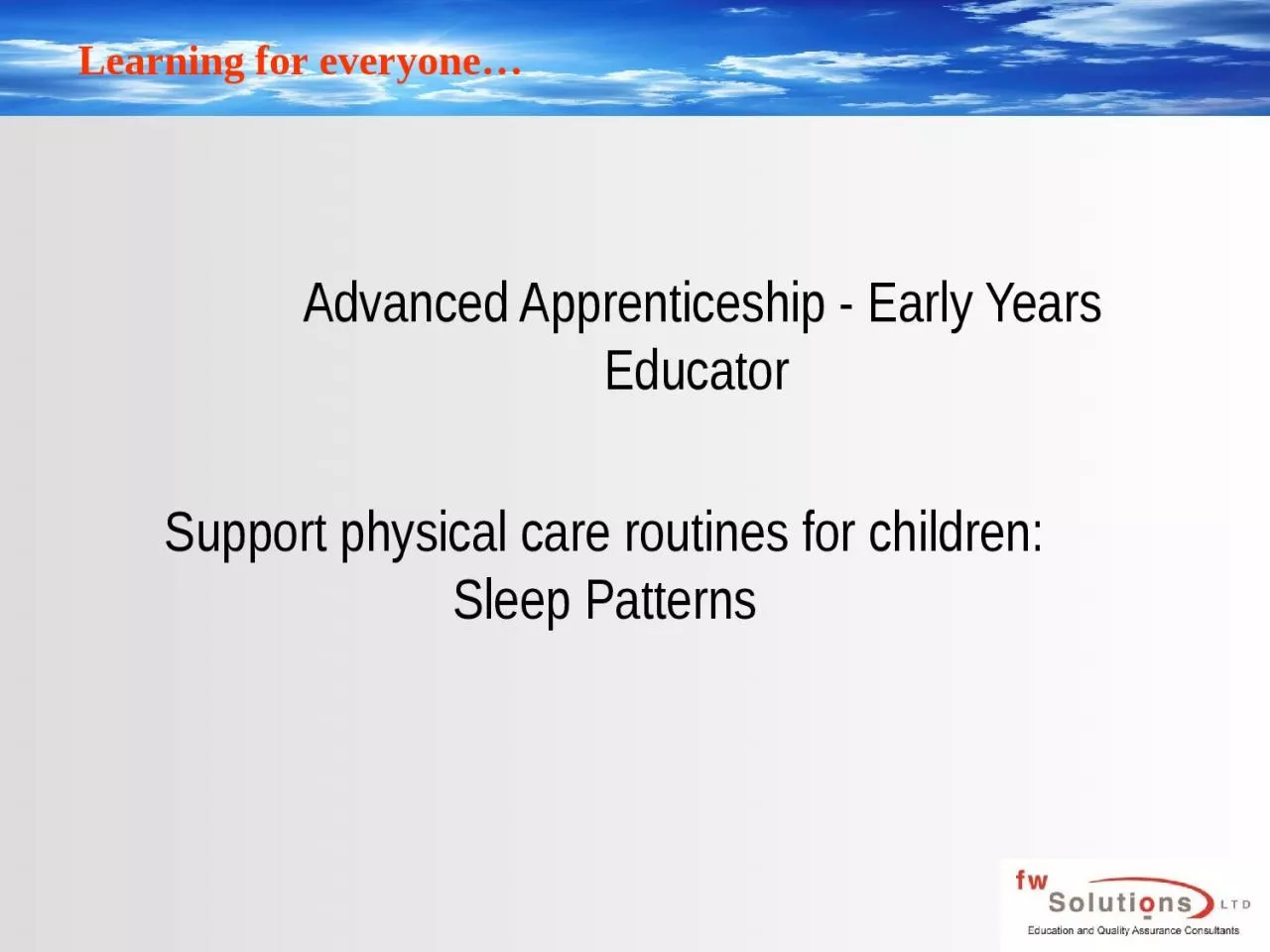PPT-Advanced Apprenticeship - Early Years Educator
Author : heavin | Published Date : 2024-02-09
Support physical care routines for children Sleep Patterns Aims and Objectives The aim of this presentation is to deliver knowledge and understanding of the sleep
Presentation Embed Code
Download Presentation
Download Presentation The PPT/PDF document "Advanced Apprenticeship - Early Years Ed..." is the property of its rightful owner. Permission is granted to download and print the materials on this website for personal, non-commercial use only, and to display it on your personal computer provided you do not modify the materials and that you retain all copyright notices contained in the materials. By downloading content from our website, you accept the terms of this agreement.
Advanced Apprenticeship - Early Years Educator: Transcript
Download Rules Of Document
"Advanced Apprenticeship - Early Years Educator"The content belongs to its owner. You may download and print it for personal use, without modification, and keep all copyright notices. By downloading, you agree to these terms.
Related Documents














